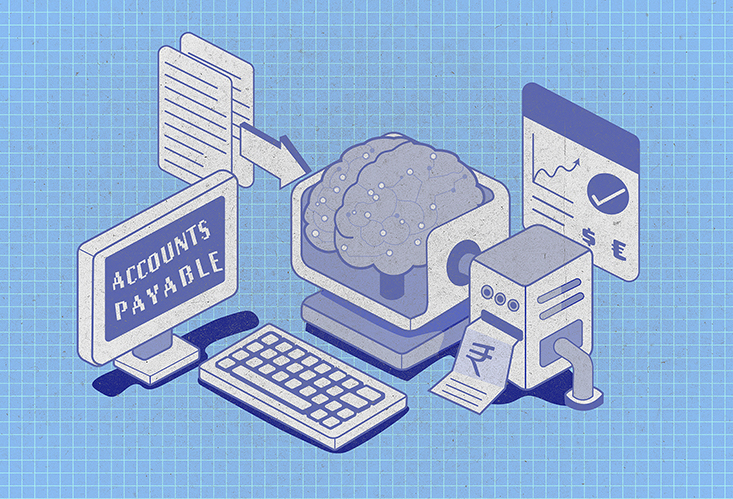The traditional approach to financial planning involved creating annual budgets and forecasts, updating them sporadically, and hoping for the best. But today, when market trends, customer behaviors, and external forces can change in an instant, finance teams need a more agile and adaptive approach—a continuous planning process.
Consider for instance, the retail giant, Amazon utilizes continuous planning to adapt to rapidly changing market conditions and customer preferences. It regularly adjusts its inventory, pricing strategies, and marketing campaigns based on real-time data and customer feedback.
In this blog, we will explore the concept of continuous financial planning in detail. We will dive into the key components of the process and analyze the tech and tools that can support its execution. Let’s get deep.
What is continuous planning?
Continuous planning helps in improving the speed and accuracy of financial decision-making. It falls under the umbrella of continuous business planning with a focus on financial strategy. Moreover, it is a fine shift from traditional, annual planning cycles to a more agile and flexible process.
Some key characteristics include—
📍Regular reviews and updates: Forget a single annual plan. Continuous financial planning involves frequent reviews and adjustments. It allows you to adapt to changing market conditions, revenue, or expenses.
📍Data-driven insights: With continuous planning, you make use of real-time financial data. That means, the possibility of informed decisions based on the latest trends.
📍Integration with overall strategy: Continuous planning connects financial planning with business goals, paving the way for perfect alignment. Your broader organizational goals are met with it.
📍More agility and improved responsiveness: This technique furnishes quick adjustments to unforeseen circumstances.
What are the key steps within continuous planning?
Below is a breakdown of continuous financial planning process—
Step 1: Embrace real-time data
Continuous planning succeeds with up-to-date data. You access real-time data on your financial performance and cash flow and make informed adjustments. Bluecopa simplifies this process, avoiding the need for manual data collection, organization, and visualization.
Step 2: Build a dynamic plan
FP&A teams uses real-time data to build dynamic financial plans. Plans are aligned with overall business goals.
Step 3: Continuous evaluation
Unlike traditional approach, continuous plans don’t lock you into year-long or quarterly timeframe. Instead, the plan is reassessed whenever events emerge. For instance, monthly updates are common and ensure your plan stays adaptable and relevant.
Step 4: Leverage automation and tech
As always, continuous planning is data-centric and resource-intensive. Automation fixes this and make you get rid of manual work. Integrating tech into strategic planning process make you more effective.
Step 5: Anticipate and adapt
You get the chance to proactively anticipate changes. Further, you get a hold of how potential future developments impact your roadmap.
What are the challenges of traditional planning?
Implemented annually, traditional planning faces several challenges including—
Outdated data
Traditional planning depends on data and forecasts generated at fixed points of time. This results in plans made of inaccurate information.
Absence of agility
With annual planning, you can’t accommodate changing circumstances. This can leave finance teams struggling to keep up with live events.
Limited visibility
Traditional planning focuses on specific goals or areas of finance, resulting in siloed decision-making and missed opportunities.
Reactive vs Proactive
Traditional planning is reactive in nature whereas continuous planning is proactive, allowing for course corrections before problems escalate.
How does continuous planning address above challenges?
Continuous planning fixes the above issues by —
- Utilizing real-time data: Incorporating up-to-date information allows for more accurate forecasts and adaptable strategies.
- Promoting ongoing monitoring: Regular reviews and adjustments ensure plans remain relevant and aligned with changing circumstances.
- Encouraging a holistic view: Continuous planning considers all financial aspects, fostering integrated and well-rounded decision-making.
- Facilitating proactive adjustments: The ongoing nature of the process allows for prompt responses to unforeseen events.
- Potentially leveraging automation: Technology can streamline data collection and analysis, freeing up time and resources.
Signs that you should incorporate continuous planning
Sign 1: Your environment is constantly changing
Say, you function within an unpredictable circumstance. You get exposed to frequent shifts in market trends, tech, and customer preferences. In that case, continuous planning allows you to adapt quickly and gain a competitive edge.
Sign 2: Your priorities and goals are evolving
If your objectives and priorities change rapidly, relying on static plans is inefficient. Here, continuous planning allows for regular adjustments and updates.
Sign 3: You struggle to react to unforeseen circumstances
Consider yourself struggling to accommodate unexpected events. In this case, continuous planning helps you be more proactive and responsive.
Sign 4: You have access to real-time data
Continuously updated data helps you make more informed decisions and shy away from potential issues.
Sign 5: Collaboration is key to your success
If effective collaboration and open communication are critical to your success, continuous planning can provide significant benefits.
How does continuous planning bring you closer to modern finance?
Greater efficiency and effectiveness across departments is the need of the hour. And when it comes to finance teams, they are expected to solve more, quickly with limited resources.
The bottleneck that’s pervasive within finance teams is the presence of traditional manual processes. Say, for instance, consider relying on laborious offline spreadsheets - this hampers their productivity. This costs hundreds of work hours per month, diverting valuable resources away from strategic analysis.
So, change becomes quintessential. Automating activities like closing the books and generating reports can liberate finance teams’ valuable time. Most of the modern tech makes modern finance a reality — it houses data, tasks, deliverables, and collaboration tools on a unified platform, accessible to both finance and business users anytime, anywhere.
What is the value of continuous planning to SaaS CFOs?
Continuous planning is valuable to SaaS CFOs for a variety of reasons—
#1 Agility
This business technique enables SaaS CFOs to be agile in their decision-making. It helps them quickly adjust budgets, resource allocations, and revenue projections based on the latest trends and data.
#2 Optimized resource allocation
Continuous evaluation and adjustment of financial plans means CFOs can optimize resource allocation across product development, sales, and marketing. This helps them allocate resources to areas with the highest potential for growth and ROI.
#3 Improved forecasting accuracy
With continuous planning, CFOs get the chance to incorporate real-time data into their forecasting models. This eventually leads to more accurate predictions of future financial performance.
#4 Better risk management
SaaS CFOs face various risks, including competition, regulatory changes, and cybersecurity threats. Continuous planning enables them to identify and assess these risks more effectively and develop mitigation strategies accordingly.
#4 Better aligned business goals
Continuous planning facilitates better alignment between financial goals and overall business objectives. By regularly reviewing and adjusting financial plans, CFOs can ensure that financial strategies support the company's broader mission, vision, and growth targets.
#5 Enhanced communication and collaboration
Continuous planning encourages ongoing communication and collaboration among different departments within the organization. CFOs can work closely with other functional leaders to align financial plans with operational objectives and ensure that everyone is working towards common goals.
How does Bluecopa help with continuous planning?
Bluecopa provides a single source of truth of all your business data. You get access to real-time data, specialized modeling and cutting-edge scenario planning tools. With help of customizable templates, it helps you monitor financial KPIs or metrics all time.
Moreover, by connecting multiple sources with Bluecopa, you could play around, review and forecast your data — That’s how it enables continuous planning. It also helps in harmonious collaboration across teams. With Bluecopa, you could change your strategies or tactics when events dictate.
To integrate continuous planning within your business, chat with us. Get yourself a personalized demo.




.jpeg)

